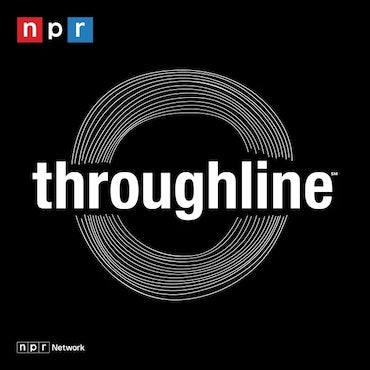In honor of Francis, ‘Knotted Grotto’ offers ties that bind among prayers, struggles
A temporary cave is forming in Philadelphia as a religious sculpture for the visit by Pope Francis next month. The wooden grotto will be woven with 30,000 struggles.
Each struggle, submitted by an individual with a problem or prayer, is hand-written on ribbons of fabric. Those ribbons will be woven into the curved slats forming the “Knotted Grotto,” a round, wooden installation, 22 feet in diameter and 10 feet high. It’s now sitting in a garage in East Falls, soon to be relocated next to the Basilica of Sts. Peter and Paul on the Parkway where it will remain until the visit by Pope Francis.
The curved grotto was built using a ship-building technique of making wood slats pliable in a steam chamber, something artist Daniel Ostrov learned building boats at the Seaport Museum. He and his wife and partner, Stephanie Cole, were hired to fabricate the installation so that visitors could walk inside it.
“Hopefully people, when they come in, they get a feeling of contemplation,” said Cole. “‘Let’s get quiet and think about what’s around me.'”
“Yeah, one of the words we talked about is sanctuary,” added Ostrov. “A space where you are aware of something that is different from the normal world around you.”
Some of the woven ribbons, forming the skin of the grotto, will be knotted. The project is the brainchild of artist Meg Saligman, commissioned to make the piece by Project HOME. Central to her design is that visitors to the grotto will be able to untie the knotted struggles of others.
“Traditionally, in the Catholic faith, grottoes were a place you light a candle, leave a struggle or a prayer,” said Saligman. “In this, you leave your struggle and untie the knot of someone else. It’s an exchange — a collective experience.”
The idea for Knotted Grotto came from an 18th century devotional painting called “Mary Untier of Knots,” a favorite of Pope Francis.
The grotto is one part of Project HOME’s three-part initiative. In anticipation of the pope’s visit, the organization’s Mercy and Justice initiative urges people to write to lawmakers in support of poverty legislation, to give money to charitable causes, and to offer prayers inside this grotto.
“By sharing our struggles — even in prayer and anonymously — we develop closer connections to one another,” said Sister Mary Scullion, founder of Project HOME. “It also reminds us that each day is an opportunity for us to leave our own knot for struggle, and to untie the knot of others.”
Scullion hopes to raise $1.4 million for a list of specific charitable projects across a range of secular and religious programs, including Catholic, Methodist and Jewish. She says $1 million has been raised to date. The $200,000 cost of the sculpture was covered by a handful of regional foundations.
In her Queen Village studio stuffed with art supplies, piles of ribbon, and religious imagery, Saligman said the project has reconnected her with her religious roots.
“I was raised Catholic and converted to Judaism with my family as an adult,” she said. “During this project, I’m a ‘cashew.’ My studio is filling with images of the Blessed Mother. It’s such a warm and fuzzy connection for me.”
WHYY is your source for fact-based, in-depth journalism and information. As a nonprofit organization, we rely on financial support from readers like you. Please give today.












